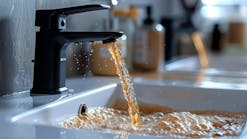For many years, I noticed the Energy Star sticker on my salon's water cooler, and I used to wonder what it meant. Who put the sticker there? What makes a water cooler a star?
This was years before I considered purchasing an appliance, let alone making third-party certification my career. Now my view is different, because all I see are labels, symbols and marks, and I have the knowledge and resources to understand the programs.
Product Categories
Energy Star was created in 1992 by the U.S. Environmental Protection Agency (EPA) and the U.S. Department of Energy to reduce greenhouse gas emissions caused by inefficient energy use and to make it easy for consumers to identify and purchase energy-efficient products. If a consumer can save money and protect the environment while using products that are equal in performance to their more wasteful counterparts, there is not a much of a downside. The program also provides the opportunity for tax credits.
Today, Energy Star provides a trustworthy label on more than 60 product categories for the home and office. A product category is established based on several criteria, such as:
- The products' ability to contribute significant energy savings nationwide;
- The products' ability to deliver the features and performance demanded by consumers;
- The purchasers' ability to recover the investment of buying a more expensive model through utility bill savings in a reasonable amount of time;
- Measurability of energy consumption and performance;
- Effectiveness of labeling in differentiating products; and
- Visibility of the label.
Of the established categories, products that utilize water include clothes washers, dishwashers, refrigerators, coolers and water heaters. Product specifications exist for each category, outlining the testing and program requirements for product partners. A product partner is any brand owner that sells products with the Energy Star label in the U.S. All program partners must enter into a manufacturing partner agreement with EPA.
Earning Approval
After product categories are determined, the next step is determining how a product that falls into one of the approved categories becomes qualified to Energy Star standards. Using water coolers as an example, I will examine product testing, review from a certification body (CB) and ongoing testing.
A water cooler is a freestanding device that consumes energy to cool and/or heat water before dispensing it for consumption. Depending on which water temperatures the unit offers (cold, hot and/or room temperature), it may have a refrigeration cycle or electric resistance heater. There also are compartment-type bottled water coolers with a refrigerated compartment that may have an icemaker.
Both bottled and bottle-less models are eligible for Energy Star qualification. The main criterion that is measured to qualify water coolers is standby energy consumption, which is the energy required to maintain cold and/or hot water at appropriate dispensing temperatures with no water being withdrawn. Each individual model must be tested for standby energy use in order to be considered for Energy Star qualification.
Qualified laboratories conduct the standby energy use test, focusing on overall standby losses without withdrawing any water. Energy use is measured over a period of 24 hours with a watt meter after water temperatures are established. If the water cooler’s standby energy use under test conditions is less than or equal to 0.16 kWh per day for cold-only and cook-and-cold units, or less than or equal to 1.2 kWh per day for hot-and-cold units, the cooler has met the product testing portion for Energy Star qualification.
After satisfactory testing, the next step is to gain third-party certification. This ensures consumer confidence in the Energy Star label, and also protects the investment of the manufacturing partner. Companies found labeling without appropriate certification are required to remove the label from their products and take other appropriate corrective actions.
Accreditation Requirements
CBs must meet several criteria set forth by EPA to be able to certify Energy Star products. A key criterion is accreditation to ISO/IEC Guide 65 by an accreditation body (AB) that is an International Accreditation Forum Multilateral Recognition Agreement signatory. The American National Standards Institute and the Supply Chain Council are two such ABs. They can approve Energy Star in the scope of the accredited CB for particular product categories if it meets the AB requirements.
Once a CB is recognized by EPA and has the appropriate scope included in its accreditation, it may certify Energy Star products. CBs verify data from EPA-recognized laboratories and maintain open correspondence with EPA, including reporting products that meet Energy Star specifications, as well as reporting any products ineligible for certification or that fail to meet requirements. CBs also administer verification testing and challenge testing while staying up to date on product specifications and test procedures, and maintaining ongoing accreditation.
Ongoing Testing
After initial certification to Energy Star, the product partner must adhere to several commitments outlined in the partnership agreement, including verification and challenge testing, which are conducted through the CB.
For water coolers, a certain percentage of Energy Star-qualified models are retested to ensure they meet the performance parameters outlined in the specification. The models are picked randomly, and the CB works with EPA to ensure they are chosen as fairly as possible.
EPA also can increase the amount of testing required or refer certain products for testing. Most of these products will be purchased from the open market from reputable retailers or procured from storage warehouses.
Energy Star certification may seem complex, but with help from accredited CBs, the process for certifying water coolers and other product categories can be an energy-efficient one.


